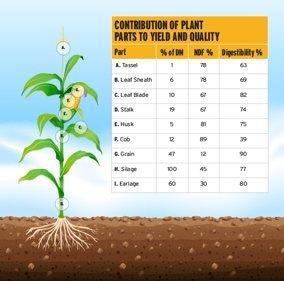Corn Fit For Grazing
Growing silage corn for cattle feed has become an increasingly common practice in Alberta, now growing corn for grazing is also becoming more common place.
There are a lot of good reasons to turn cattle out onto a cornfield to graze through the fall and winter, not the least of which are time savings and lower feed costs. But, if you want grazing corn to have the nutritional value your cows need, then you need to think a little differently about how you grow it.
The main issue is grain accumulation. When growing corn for silage, you're looking for decent starch content, which comes from the grain. But, what you absolutely don't want in corn grown for grazing is too much grain because that means too much starch for pregnant cows - the usual occupants of winter cornfields - and can lead to rumen acidosis and other serious health issues.
So, how do you bring down the grain accumulation and grow a corn crop ideal for grazing? Here are some tips.
Overshoot the heat units. Odd as it sounds, your goal is to intentionally delay crop maturity. Your local UFA CAM will be able to help identify the CHU for your area. Next, go to your product guide and look for a hybrid with a corn heat unit (CHU) rating that's 400 points above that. This almost guarantees that overall grain and starch content will be lower because the plants won't have enough heat units to reach maturity and accumulate too much grain by the time you send cows in to graze.
Boost seeding rate. More plants per square foot does two things. First, it aids in weed control. Second, and more importantly, a higher seeding rate leads to thinner corn stalks, which are easier for cows to eat, and delays maturity. How much to boost your seeding rate by is somewhat hybrid dependent: Shoot for a rate about 10 per cent higher than you'd use with a silage hybrid, and 20 to 25 per cent higher than you'd use with grain corn.

A dual-purpose option. The biggest risk factor to growing a corn crop strictly for grazing purposes is an open fall. When the corn is allowed to keep growing, it'll continue to put all its energy into grain production and you're back to the too much starch problem. One way to protect against this possibility is to choose a grain corn hybrid with a CHU rating and relative maturity (RM) suited to your area, harvest the grain, then turn your cows out to feed on the low-energy over remaining in the field.
If you're interested in grazing cattle on corn and want to talk it over with someone, call your local CAM.